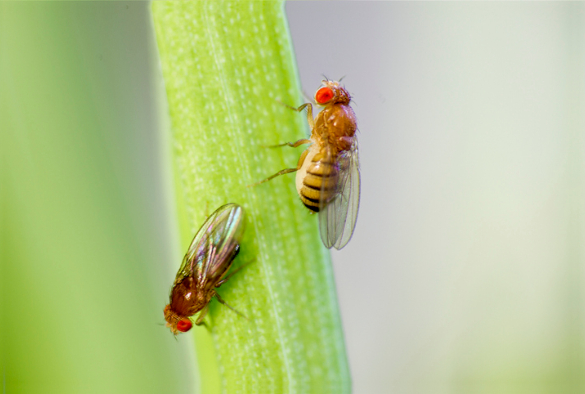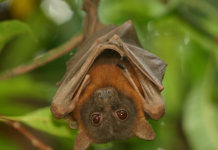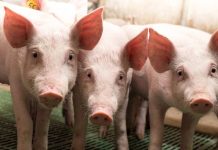A new study by University of Liverpool ecologists warns that heat-induced male infertility will see some species succumb to the effects of climate change earlier than thought.
Currently, scientists are trying to predict where species will be lost due to climate change so they can plan effective conservation strategies. However, research on temperature tolerance has generally focused on the temperatures that are lethal to organisms, rather than the temperatures at which organisms can no longer breed.
Published in Nature Climate Change, the study of 43 fruit fly (Drosophila) species showed that in almost half of the species, males became sterile at lower than lethal temperatures. Importantly, the worldwide distribution of these species could be predicted much more accurately by including the temperature at which they become sterile, rather than just using their lethal temperature. To give an example, Drosophila lummei males are sterile four degrees below their lethal limit. To put that in context, four degrees is the temperature difference between summer in northern England and the south of France.
Lead researcher Dr Steven Parratt said: “Our findings strongly suggest that where species can survive in nature is determined by the temperature at which males become sterile, not the lethal temperature.
“Unfortunately, we do not have any way to tell which organisms are fertile up to their lethal temperature, and which will be sterilised at cooler temperatures. So, a lot of species may have a hidden vulnerability to high temperatures that has gone unnoticed. This will make conservation more difficult, as we may be overestimating how well many species will do as the planet warms.”
The researchers went on to model this for one of the Drosophila species using temperature predictions for 2060 and found more than half of areas with temperatures cool enough to survive will be too hot for the males to remain fertile.
Senior researcher Dr Tom Price commented: “Our work emphasises that temperature-driven fertility losses may be a major threat to biodiversity during climate change. We already had reports of fertility losses at high temperature in everything from pigs to ostriches, to fish, flowers, bees, and even humans. Unfortunately, our research suggests they are not isolated cases, and perhaps half of all species will be vulnerable to thermal infertility.
“We now urgently need to understand the range of organisms likely to suffer thermal fertility losses in nature, and the traits that predict vulnerability. We must understand the underlying genetics and physiology, so we can predict which organisms are vulnerable, and perhaps produce breeds of livestock more robust to these challenges.”
Head of Terrestrial Ecosystems at the Natural Environment Research Council Dr Simon Kerley said: “This is a highly exciting piece of work that turns on its head our thinking and assumption of the role, rate, and impact of climate change. It really starts to shed light on the hidden and subtle impact of the changing conditions on the myriad of animals that we perhaps take for granted and have not previously considered ‘at risk’ from our changing climate. Importantly, it alerts us to the understanding this risk could occur sooner than we thought.
“This piece of work takes biology, at its most fundamental level, and explores it in a well-known and understood laboratory animal, but then takes that crucial extra step of relating it to the real world and the potential impact if may have on global biodiversity.
“With the COP15 and COP26 conferences taking place this year, this study serves as a timely reminder of the need to research and better understand the relationship between climate change and biodiversity loss. The Natural Environmental Research Council will continue to fund this vital research, and UKRI as a whole will work as part of the global effort to safeguard the natural environment for generations to come.”







